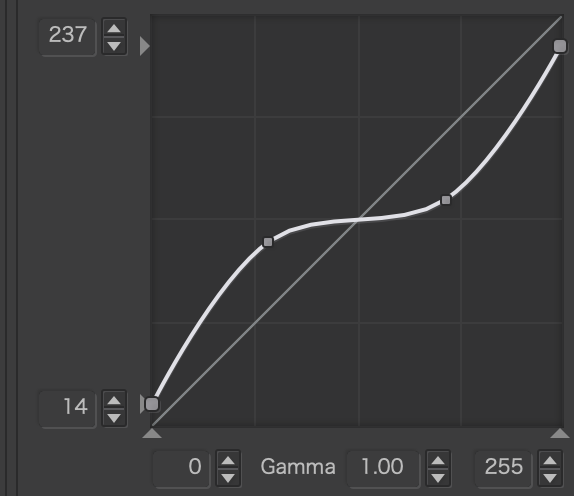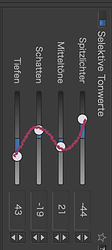I like photolab raw conversion of my Sony A1 files with DeepPrime and minor lens sharpening, I do 200 at once takes about 30min. I have been using Tone adjustment to prevent clipping of black and highlights but consequently end up with a low contrast DNG. I wish for nicely spread tonal range as a starting base in my DNG for finishing in photoshop, is this possible or a case of experimentation with the tonal sliders.
Don’t use Tone adjustment. just lower the top and raise the bottom of the Tone Curve and then add a subtle ‘S’ shape to the curve instead.
Post a sample typical image if you want and we can take a look at what would help.
And I would ask why you feel the need to use Photoshop, unless you are doing pixel editing?
Thank you, I will try the tone curve.
I use PS for multiple things, like the masking tools in the raw filter, cloning, removing unwanted items, further filters.
Bet I could do more in photolab but I am dealing with literally thousands of images a week so much easier to stick with my current knowledge base.
Take the time to familiarise yourself with PL. It will save you from having to duplicate all your files as DNGs as PL can do most of what you want, non-destructively, on the original RAW files.
And, for speed, you can copy adjustments from one image to a selection or create your own presets that you can apply in one click.
That’s a very bold statement and I disagree on that. Especially if one’s used to context filling, repair brush and a couple of other tools PS has and PL will probably never be up to. But it’s worth a try @TimMunsey because some selective and general edits I feel better be done in the RAW converter - PL is just in no way an alternative to extensive geometrical edits. If you have large number of similar files you will like simultaneous editing in PL, even the automatics are done simultaneously but not one for all selected images, each is handled individually. That’s a real benefit.
Hmmm,
if we suppose to use Curves instead Tone adjustment sliders then why they are there?
And, why not to use those sliders? Are they not good for the task?
The two tools do subtly different things. Depending on the image and what you want to achieve, you can one, the other or both.
Well, all sliders do different things, but the question was
I mean, no one of us saw the images @TimMunsey wants to edit. And you were rather quick @Joanna prohibiting the use of tone adjustment.
I do use them more often than tonal curves. And basically they are also kind of a tonal kurve, just rotated 90° to save some space

With tonal curves adding a node is limiting the range of another node. For me the selective tone sliders are to general. It works as a tonal curve with only one node.
But back to the question concerning the clipping, lowering the max value and rising the minimal value is like blindfolding me. I do understand one doesn’t want a value of 255 when printing, but I don’t think that was the question of @TimMunsey .
George
How to automate…
- there is no way to automate this in a smart way that I know of. Smart meaning that, no matter what we throw at the automaton, output will never be clipped.
- automate in a “dumb way”: create or modify a preset that increases contrast by using whatever tools you like and limit output to <255 with the tone curve. Problem being that DPL applies adjustments in its own way and the top value of <255 might be overruled by other adjustments.

I always thought the same thing too and followed exactly what you wrote …although about six months ago probably, a little less, I discovered there’s a “” enhance “” option and my only camera is a 20 mp megapixel Sony RX 10 mark four and I’ve noticed such a step up in the image quality from now instead of just using photo lab 4 an The Kik collection, when I use those too in conjunction with Lightroom classic with the enhance option it’s a step up in IQ Or is it just like a gimmick type of thing ,I was really shocked I assumed that’s what it was gonna be that’s such a big relative game changer. ,especially with landscaping photos when I use the enhance option for Lightroom oh by the way, I do noise reduction first in PHOTOL4. and then I send it to Lightroom classic and then from Lightroom Classic enhance \ thirdly, usually will send it to Nik… In your professional opinion do you think that’s an all right process to go with?I learn through trial and error and I never know if I’m doing something really wrong or really right or something in between lol thank you
Trial and error is the only way to learn. Learning from someone else means that someone else made the errors for you instead 
